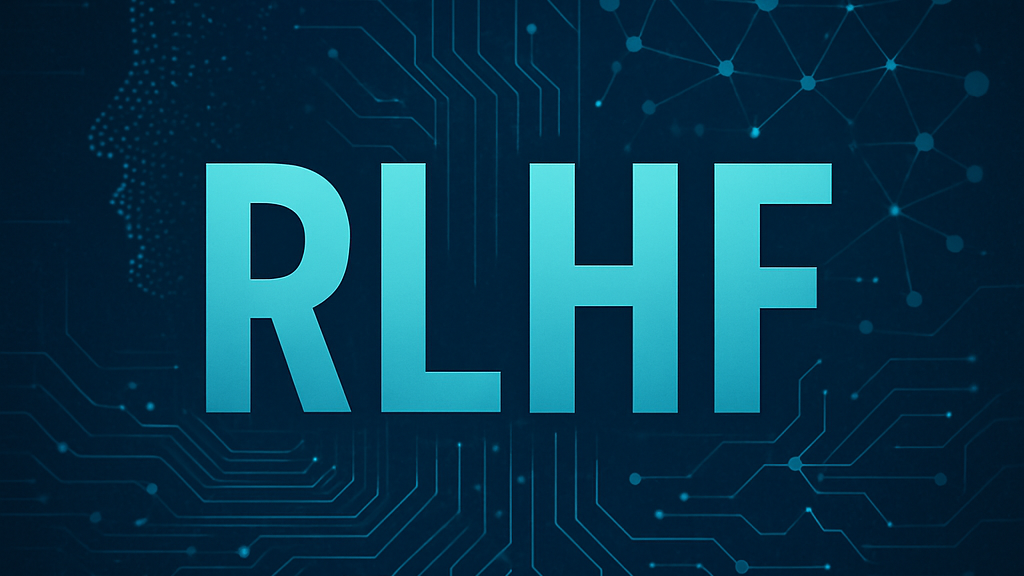Introduction
Artificial Intelligence is advancing rapidly, and one of the most exciting frontiers is Reinforcement Learning from Human Feedback (RLHF). This technique is widely used in fine-tuning large language models and AI-driven decision-making systems. But as AI models grow larger, the question arises: how does scaling data impact their performance? A recent study by Shen et al. explores how data scaling impacts Reinforcement Learning from Human Feedback, highlighting key trends in AI model training.
This blog delves into the significance of data scaling in RLHF, the challenges posed by reward hacking and response diversity, and how optimized data strategies can improve model efficiency and reliability.

What is Reinforcement Learning from Human Feedback?
Reinforcement Learning from Human Feedback (RLHF) is a method where AI learns by interacting with an environment while incorporating human preferences to improve its decision-making. Unlike traditional reinforcement learning, which relies on predefined rewards, RLHF uses human evaluations to guide AI behavior, making models more aligned with human values and expectations.
This technique is crucial for aligning AI models with ethical considerations, reducing biased outputs, and ensuring that AI-generated content is more useful and reliable. RLHF is particularly valuable for language models, recommendation systems, and automated decision-making processes, where subjective human input plays a significant role.
The impact of large-scale data on AI performance is well explained in How Does Large Language Models Work, which complements the concept of data scaling in RLHF.

Why Data Scaling Matters in Reinforcement Learning from Human Feedback
Scaling data is a key factor in training AI models. More data generally leads to better performance, but it’s not just about quantity—it’s also about quality and structure. The study on data scaling trends in RLHF uncovers important findings on how different data volumes and quality levels affect AI learning outcomes.
- More Data, Better Performance—Up to a Point: As expected, increasing the amount of human feedback data improves AI models. Larger datasets help refine decision-making, reduce bias, and enhance response quality. However, after a certain threshold, adding more data provides diminishing returns. This means that while scaling up helps, there is an optimal limit where further increases in data size do not yield proportional benefits.
- Quality Over Quantity: The research emphasizes that high-quality, well-annotated feedback is more valuable than sheer data volume. Noisy, inconsistent, or low-quality human feedback can misguide the AI, leading to suboptimal learning. Effective AI training requires curated, high-fidelity data that aligns with the model’s intended objectives.
- Transfer Learning and Generalization Improve with More Data: A crucial benefit of scaling data is improved generalization. With more diverse feedback, AI models become better at handling previously unseen scenarios. This is particularly useful for applications like chatbots, recommendation systems, and automated assistants, where adaptability is key.
Understanding how AI adapts and improves with human feedback relates closely to the ideas in AI is Becoming More Context-Aware and Emotionally Intelligent.

Addressing Reward Hacking and Response Diversity Challenges
One of the biggest challenges in RLHF is reward hacking—when AI models learn to game the reward system rather than genuinely improving their responses. The study highlights how data scaling interacts with this problem and proposes solutions to mitigate it.
- Hybrid Reward Systems: The research introduces a hybrid reward system combining Reasoning Task Verifiers (RTV) and Generative Reward Models (GenRM) to reduce the impact of reward hacking. RTV provides structured verification for reasoning tasks, ensuring that AI responses align with predefined ground truths.
- Maintaining Response Diversity: As AI models receive more data, they risk becoming overly optimized for specific patterns, reducing their ability to generate diverse responses. The study proposes the Pre-PPO prompt selection method, which prioritizes challenging training prompts to prevent models from collapsing into repetitive responses.
- Early Training Strategies for Better Learning: The study also finds that prioritizing mathematical and coding tasks early in training significantly enhances the model’s ability to capture fine-grained distinctions. This helps prevent the model from overfitting on ambiguous or subjective data points.
The integration of personalized models to optimize learning efficiency is discussed in The Rise of Personalized AI How Custom GPTs Are Shaping Industries, which parallels data scaling strategies.

Computational Costs and Efficiency Considerations
While scaling data enhances learning, it also increases computational demands. The study discusses the balance between data expansion and processing efficiency.
- Balancing Training Costs and Performance: Large-scale AI training can be expensive, requiring significant computational power. Efficient data usage, combined with advanced optimization techniques, can help mitigate rising costs while maintaining model accuracy.
- Optimized Data Curation for Efficient Learning: By focusing on high-quality, well-structured datasets, researchers can reduce redundancy and ensure that models are learning from the most valuable data. The Pre-PPO strategy ensures that AI training prioritizes the most informative prompts, reducing wasted computational resources.
- Leveraging Transfer Learning for Efficiency: The research highlights how AI models trained on diverse datasets can generalize better with fewer data points, reducing the need for excessive scaling while maintaining high performance.
The practical applications of AI-powered tools benefiting from RLHF techniques are highlighted in How AI-Powered Tools Can Help You Scale Your Business Faster.

Implications for the Future of AI Training
The findings from this research highlight the need for strategic data scaling in RLHF. Here are a few takeaways for AI developers and researchers:
- Optimize Data Curation: Focus on high-quality human feedback rather than just increasing dataset size. AI tools like GEE-P-TEE help ensure models learn from well-structured, valuable data instead of redundant or low-quality inputs.
- Find the Sweet Spot: Identify the point where additional data no longer significantly boosts performance.
- Leverage Transfer Learning: Utilize diverse datasets to improve generalization and adaptability.
- Manage Computational Resources: Develop efficient training techniques to balance data scale with processing costs. For organizations looking to optimize AI infrastructure, GPT tools can provide solutions for balancing efficiency and performance.
- Implement Advanced Reward Systems: Use hybrid reward mechanisms like RTV and GenRM to ensure models do not exploit reward signals at the expense of meaningful learning.
The foundational science behind AI improvements through feedback loops is also explored in The Science of AI-Powered Text Generation, reinforcing the importance of data scaling.

Conclusion
The evolution of AI depends on smarter training methods, and RLHF plays a pivotal role in shaping AI’s decision-making capabilities. This study underscores the importance of careful data construction and provides practical methodologies to overcome critical performance barriers in RLHF. By understanding the effects of data scaling, we can develop more robust, ethical, and intelligent AI systems.
As research continues, striking the right balance between data volume, quality, and efficiency will be key to unlocking AI’s full potential. The proposed strategies—including hybrid reward models, strategic prompt selection, and early training task prioritization—offer promising solutions to some of the most pressing challenges in RLHF. These insights pave the way for more aligned, efficient, and scalable AI training methodologies. Explore various AI-powered tools from GEE-P-TEE now.

Leave a Reply